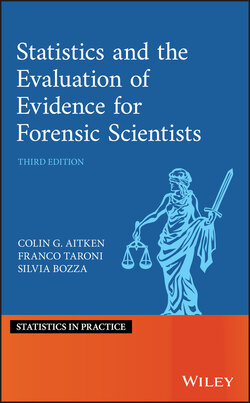Читать книгу Statistics and the Evaluation of Evidence for Forensic Scientists - Franco Taroni - Страница 42
1.7.10 Law of Total Probability
ОглавлениеEvents are said to be mutually exclusive and exhaustive if one of them has to be true and only one of them can be true; they exhaust the possibilities and the occurrence of one excludes the possibility of any other. Alternatively, they are called a partition. The event formed from the conjunction of the individual events is certain to happen since the events are exhaustive and exclusive. Thus, it has probability 1 and
(1.11)
a generalisation of the second law of probability, (1.7), for exclusive events. Consider as an example allelic distributions at a locus, e.g. locus TPOX. There are five alleles, , and 12, and these are mutually exclusive and exhaustive.
Consider for events and . Let be any other event. The events ‘ and ’ and ‘ and ’ are exclusive. They cannot both occur. The event “‘ and ’ or ‘ and ’ ” is simply . For example, let be male, be female, be left‐handed. Then
‘’ denotes a left‐handed male,
‘’ denotes a left‐handed female.
The event ‘ “ and ” or “ and ” ’ is the event that a person is a left‐handed male or a left‐handed female, which implies the person is left‐handed (). Thus,
The argument extends to any number of mutually exclusive and exhaustive events to give the law of total probability.
